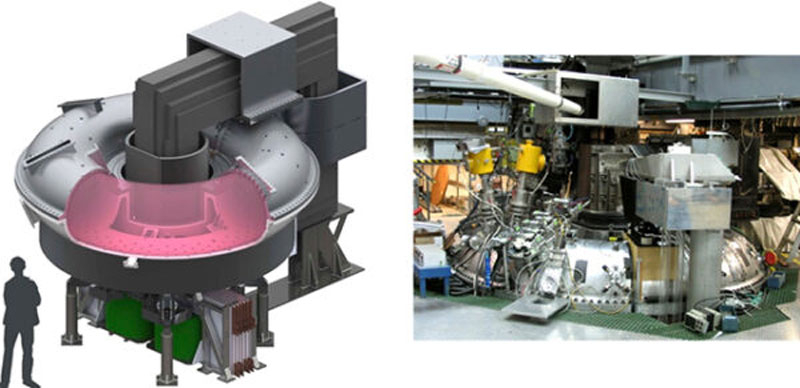Physicists at the University of Wisconsin at Madison reported a landmark achievement – they were able to increase the plasma density in a tokamak-type fusion reactor by an order of magnitude. Previously this was considered impossible because there is a limit to this value. At the very least, it was unthinkable to dream of exceeding the threshold 10 times, which would also lead to an increase in the energy output of a man-made thermonuclear reaction.

Madison Symmetric Torus. Image source: University of Wisconsin-Madison
To be fair, we note that scientists from Wisconsin carried out work at the university’s Madison Symmetric Torus (MST) reactor. This installation differs from the classical tokamak in its control and a number of design features and is probably closer to stellarators than tokamaks. The exact name of this type of tokamak is a reversed field pinch. The RFP installation initially provides increased plasma density compared to classical tokamaks, but this does not change the essence of the discovery. Scientists were able to increase the plasma density inside the working chamber by 10 times and can help extend their method to other types of tokamaks.
The plasma density limit in the working chamber of a tokamak is called the Greenwald limit. This value was obtained experimentally and is not fully justified by theory. Scientists from Wisconsin consider two points to be the key to their success: the design feature of the MST tokamak (primarily the thicker walls of the working chamber, which stabilizes the magnetic fields in the working area), as well as a special power source that allows adjustment based on feedback (again , critical for stability).
«The maximum density appears to be set by hardware limitations rather than plasma instability,” the researchers write. Two key characteristics of the MST tokamak appear to have played a critical role in this discovery that have yet to be studied and explained.
«Questions remain about why, in particular, MST is able to operate above the Greenwald threshold and to what extent this ability can be extended to higher-performance devices,” the scientists share in a paper in the journal Physical Review Letters. The answers to these questions, presumably, can bring closer that bright moment when the “artificial Sun” will light up on Earth. And it’s good if scientists understand why and how this happens without guesswork and blind spots in theory and practice.